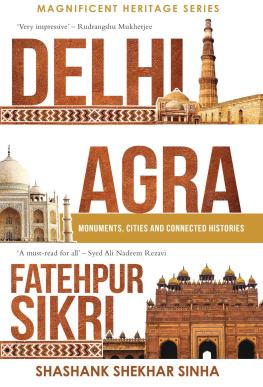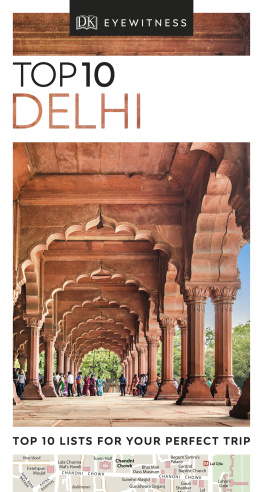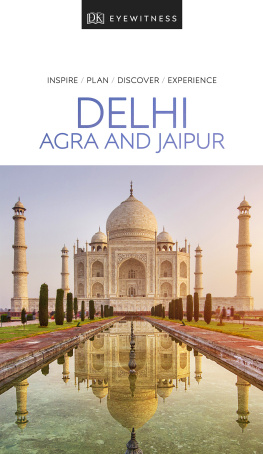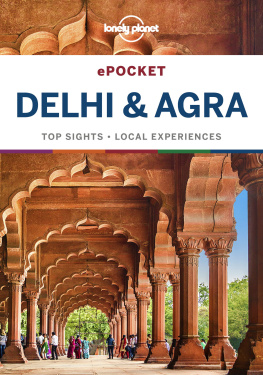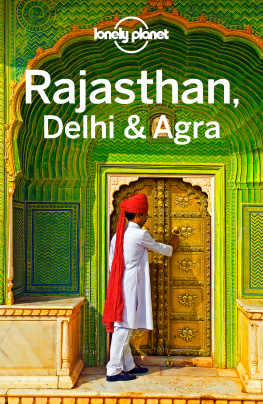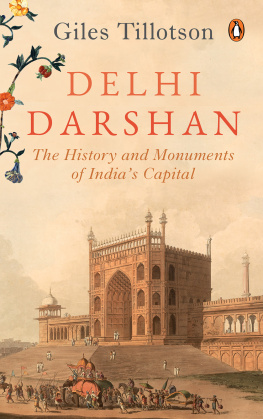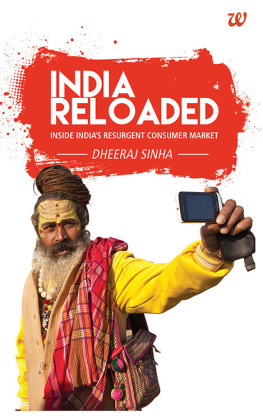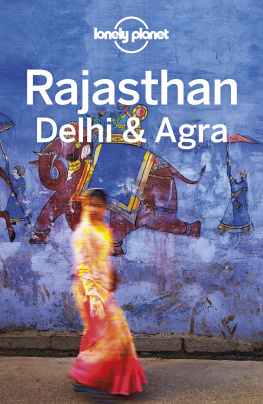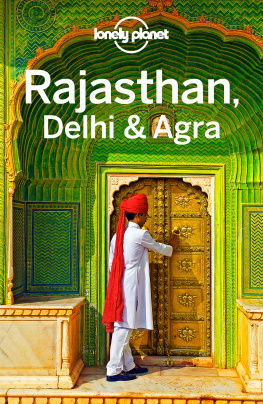For my three sisters, Jyotsna, Arpana and Rashmi,
and their most caring respective halves, Ravi Sinha,
Satish Chandra and Sanjay Sinha
CONTENTS
Guide
LIST OF FIGURES AND MAPS
IMAGES
All photographs are taken by the author, other than those credited otherwise.
SITE MAPS
A NOTE ON THE SERIES
Departing from existing studies on the subject, this series looks at heritage sites and the cities in which they are located in their larger geographical, sociocultural and historical contexts. It brings together latest and complex academic research from across disciplines, including history, archaeology, architecture, art history and heritage studies and presents it in an accessible form. Addressing the gap between the academic and popular understandings of history, the series discusses how stereotypes, assumptions and myths come into being around monuments and their builders, and how they impact our reading of the related historical periods.
Each volume in the series provides a multilayered and multidimensional account of the evolution of monuments, their architectural details, the life and times of rulers who built them, their afterlives, anecdotes and folklore surrounding them as well as debates and controversies related to the heritage sites. They also contain comprehensive, illustrated and self-sufficient chapters on the UNESCO World Heritage Sites in the respective geocultural region.
The books in the series will form essential reads for teachers, students and scholars of history, archaeology, architecture, art history, heritage studies and tourism and hospitality. Authoritative and accessible, they will be indispensable for tourists, foreign and domestic, and heritage enthusiasts. Finally, architects, conservationists, policymakers, think tanks and organizations working on monuments and heritage cities will also find these volumes very useful.
HOW TO READ THIS BOOK
The book is divided into three parts a substantive prologue about the six UNESCO World Heritage Sites (Qutb Minar, Agra Fort, Humayuns tomb, Fatehpur Sikri, Taj Mahal and Red Fort) in the context of the rise of three imperial cities related to the Delhi Sultanate and Mughal India; a detailed introduction which discusses the larger geocultural and historical contexts in which the three imperial cities came into being and how their settlements and monuments developed; and six chapters on the individual World Heritage Sites.
HOW MUCH TIME DO YOU HAVE AND WHAT DO YOU WANT TO KNOW
You can choose to read the book in the following ways depending on how much time you have and how much you want to know:
If you have enough time and want to get a comprehensive idea of the larger geocultural and historical contexts within which the three cities and their monuments developed, then you should read the complete book.
If you have less time and want to know more about the six UNESCO World Heritage Sites and how they relate to the three imperial capitals of medieval India, then read the prologue (A Tale of the Three Imperial Cities) and the six individual chapters.
If you have still less time and want to learn about some specific sites and their builders and their times, then read the chapters along with the relevant portions of the introduction (Monument, Cities and Connected Histories). The introduction follows a chronological framework and all the headings are clearly laid out.
xiv HOW TO READ THIS BOOK
If you dont have much time and want to know only about some specific site(s), then just read the individual chapter(s) connected with the site(s). The individual chapters are designed to be self-sufficient and standalone resources.
WHAT TO EXPECT IN THE CHAPTERS
The six chapters of this book bring together in a concise format, a multilayered and multidimensional history of these World Heritage Sites. They incorporate the latest research on the subject and modern controversies surrounding the sites. Any person who chooses to read any chapter should have, in around thirty pages, accessible yet authoritative information.
All chapters follow a consistent format and include the following components:
Circumstances leading to the construction of the heritage site
Information on the design and layout
Site map and photographs of monuments. Some photographs have been labelled to give a better idea of what commonly referred architectural motifs look like.
Graphic account of all monuments at a site including their evolution, histories, architecture, functions, myths, folklore and connected human stories.
Boxes containing interesting trivia and key insights
Afterlife of the site: What happened to the site after the primary builders left the scene?
One section connected with the most controversial/debated/discussed aspect of the World Heritage Site appears towards the end of each chapter. These include:
How Delhis first Friday Mosque became the Might of Islam mosque (Qutb Minar)
How the tomb complex was restored in the 21st century (Humayun tomb)

